
Student work: Scraps of Memory by Catherine Munro
OCA Creative Arts blog: Assessment work, Painting 2: concepts practice unit.
The Creative Arts program encourages interdisciplinary approaches. It’s great to see how students can navigate multiple units to build a coherent creative practice. It can be hard to juggle different parts of a practice based course and one of the key challenges, I think, can be finding how to develop an individual direction. It can be very useful to step back and reflect on what are the ideas and methods that really drive and inspire you.
This body of work entitled Scraps of Memory, by HE5 Creative Arts student Catherine Munro feels useful to share with wider OCA. She has used an exploration of painting to interrogate and play with memory, installation and creative writing. Perhaps on first glance the work might not reveal its full depth. She has presented a series of paintings, some of which are still lifes.
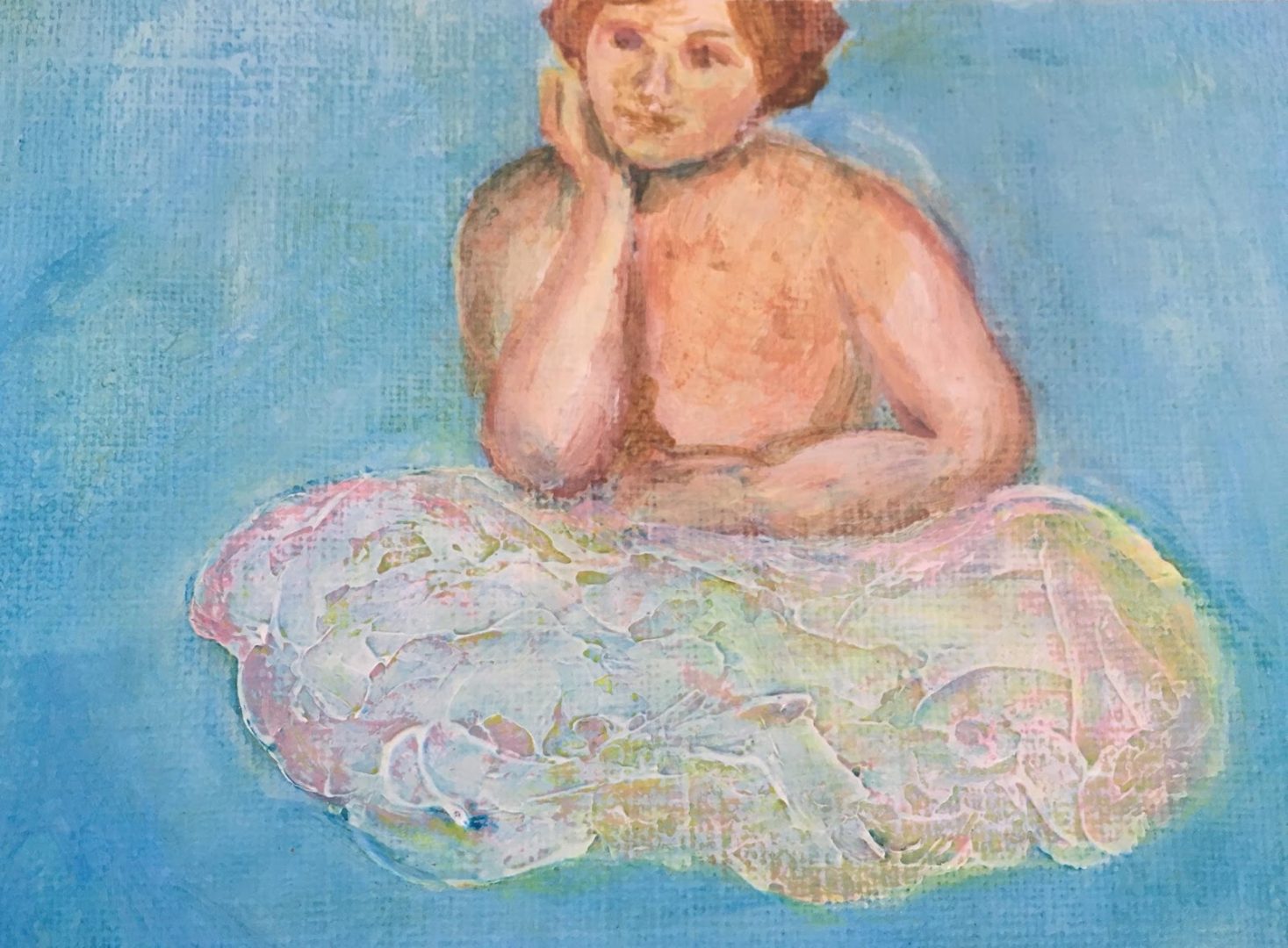
Catherine has been reading Gaston Bachelard’s The Poetics of Space and thinking about the Intimacy of her childhood home.
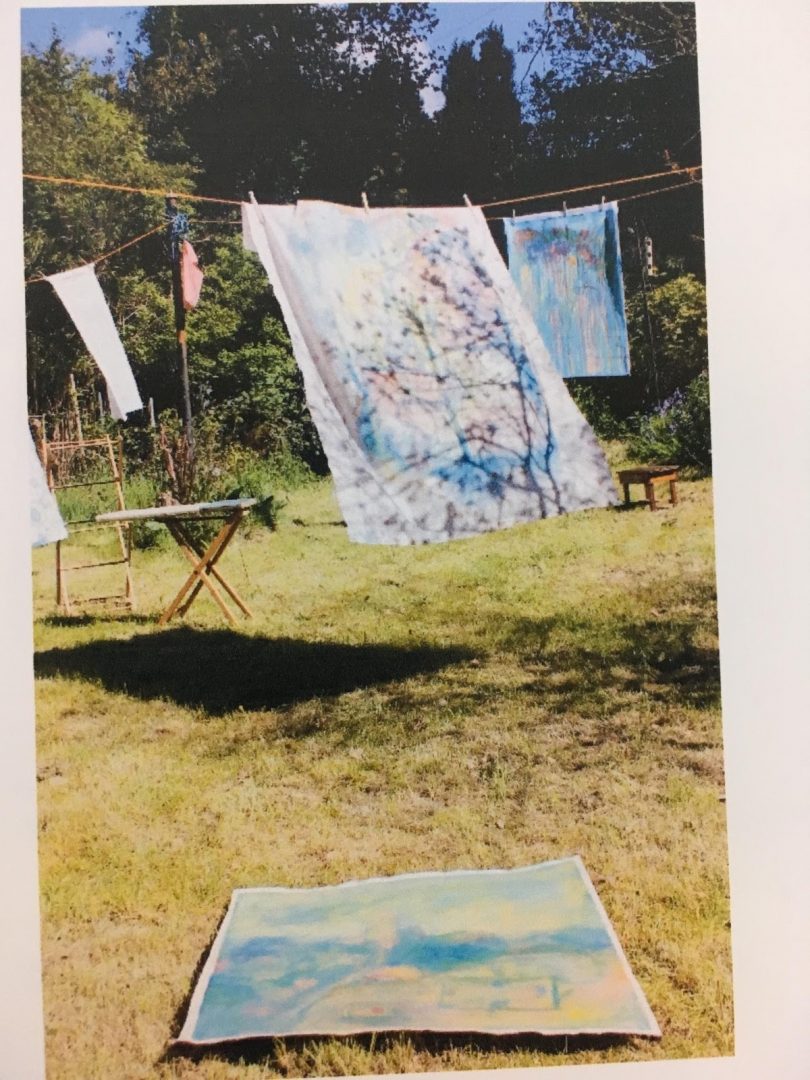
“I wanted the exhibition to encompass the ideas of identity that I had been exploring in terms of the significance of a particular place and the possessions which have meaning for us. I also wanted to reference what happens when these are taken away.” Catherine Munro
It struck me that the way Catherine has negotiated presenting this work to an audience— in the garden of her childhood home before an imminent sale— is really powerful and engaging. She has also included really interesting stories of her family’s reactions to her doing this. It is a very different outcome to presenting a painting in a gallery.
There’s quite complex ethics and issues to deal with in a project like this that require a sense of personal integrity – for example to negotiating the sensitivities of other family members. It is apparent that Catherine allowed this project to be part of her own processing of bereavement, whilst also developing her knowledge and understanding of these concerns in relation to a broader critical practice. I don’t think we can ask for much more than that. There was a sense of balance and learning that impressed the assessment team.
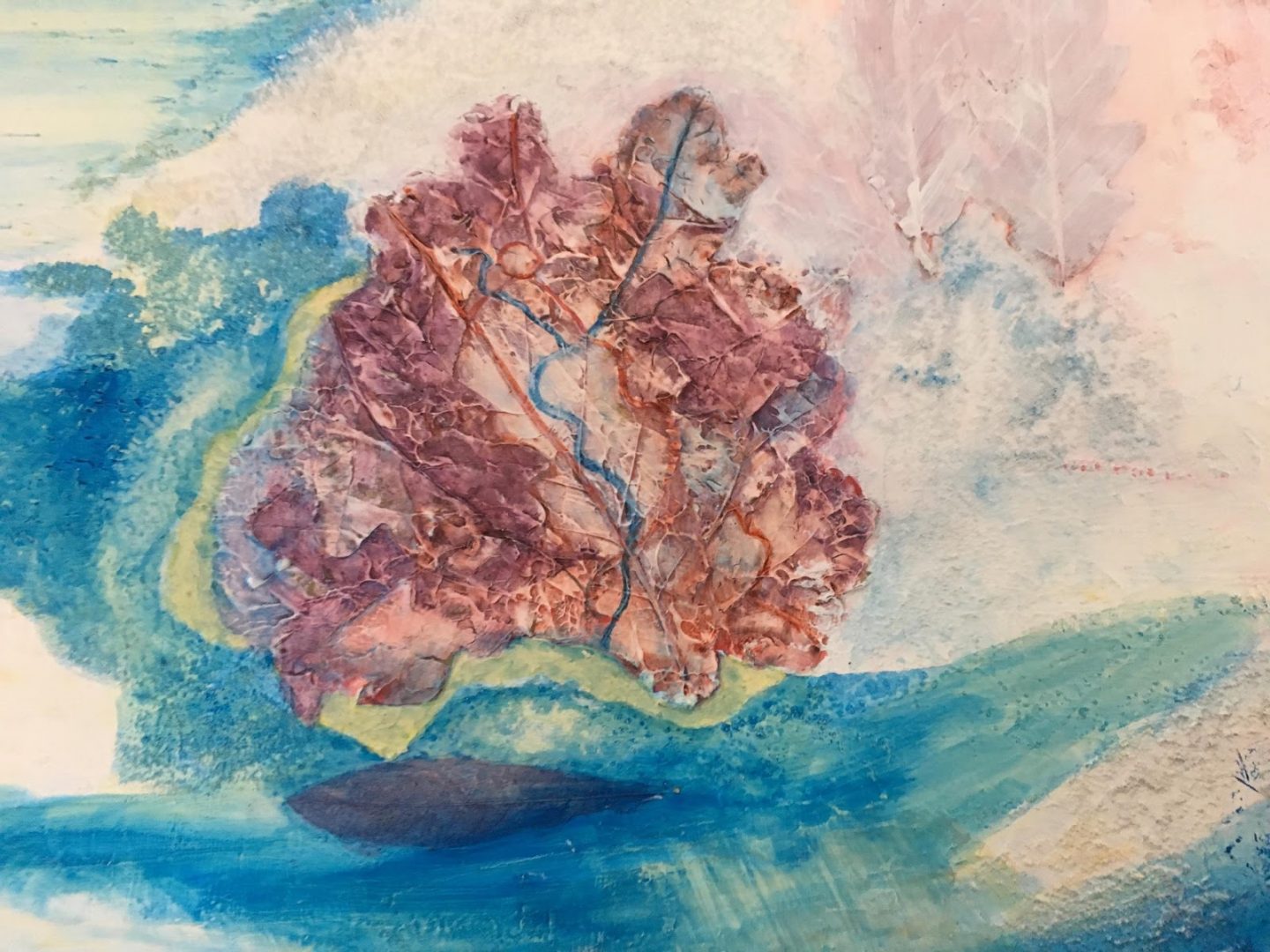
There is a consideration given to appropriate strategies of display, a small series of postcards displayed on an ironing board.
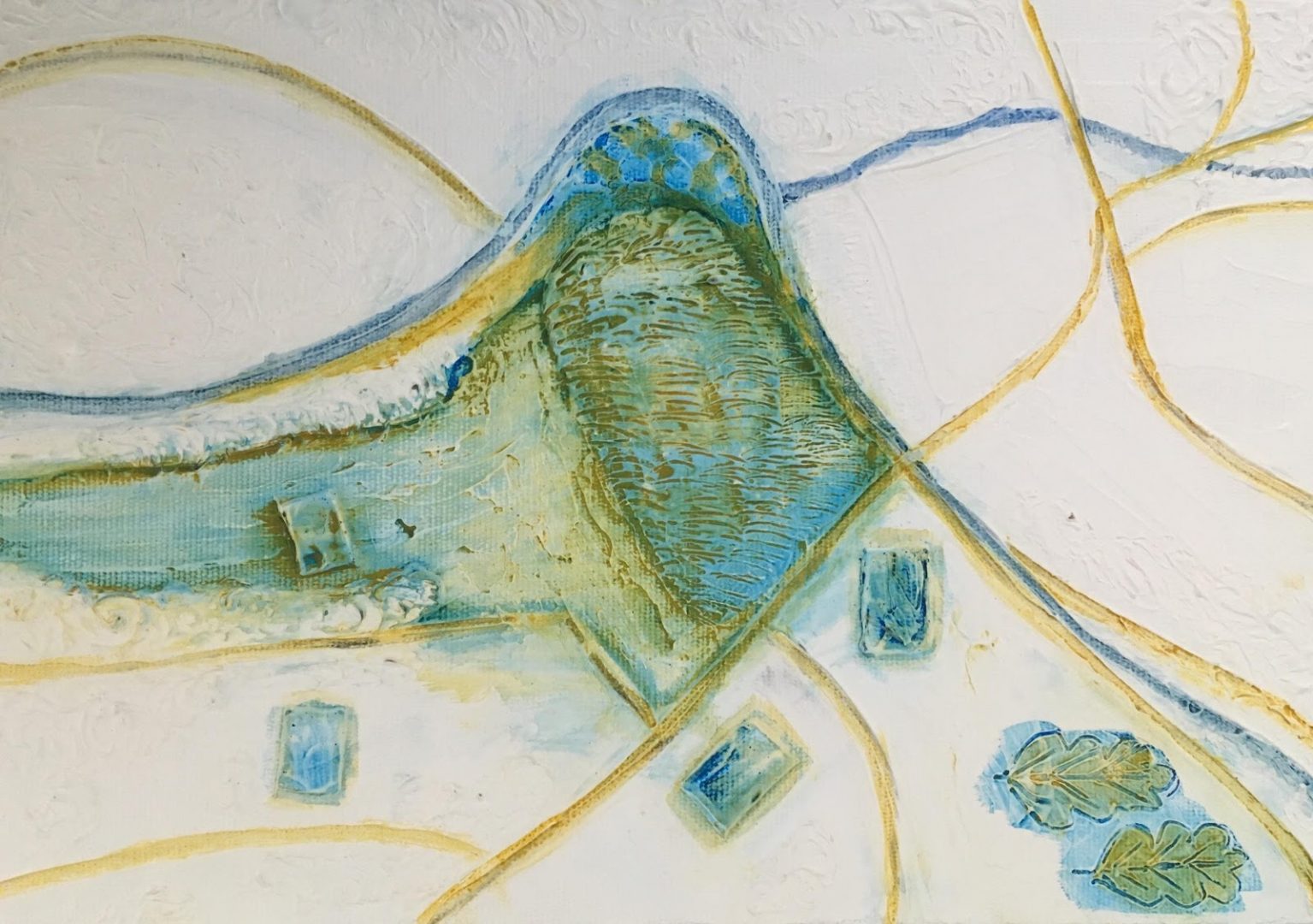
In this piece, canvas on board, there are subtle marks in the surface. The map-like composition has echoes of non-western perspectives: the Aerial view point, symbols and motifs, also of Google Earth.

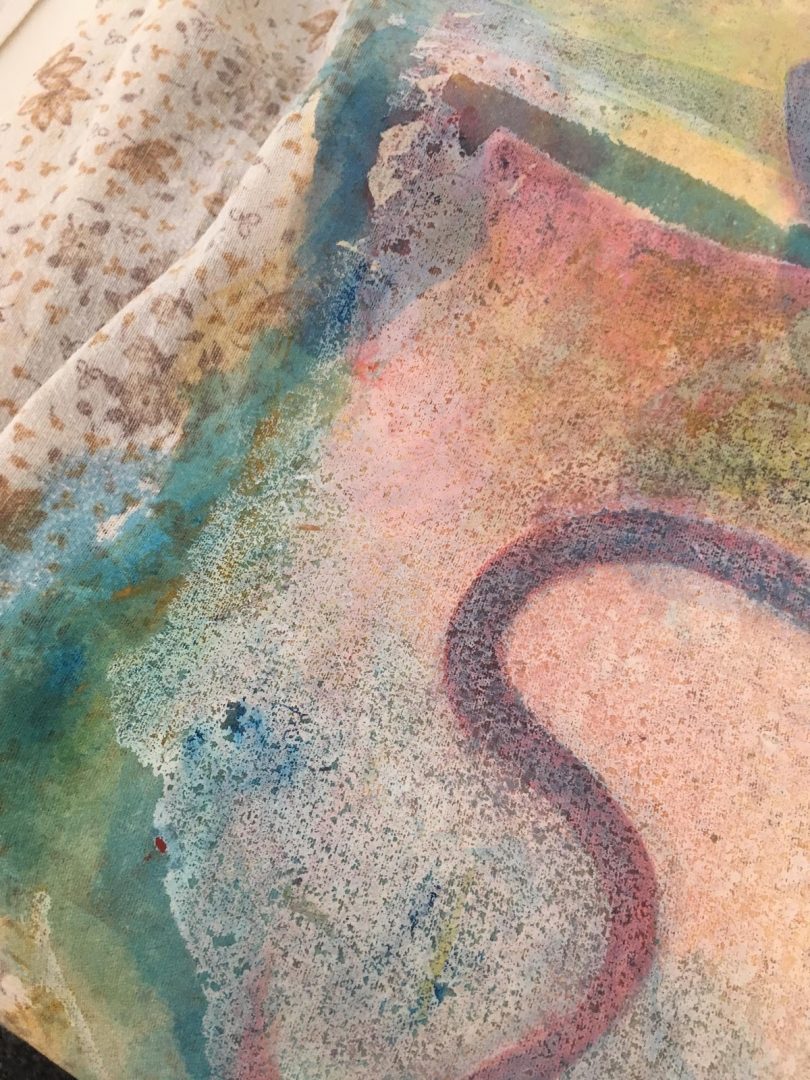
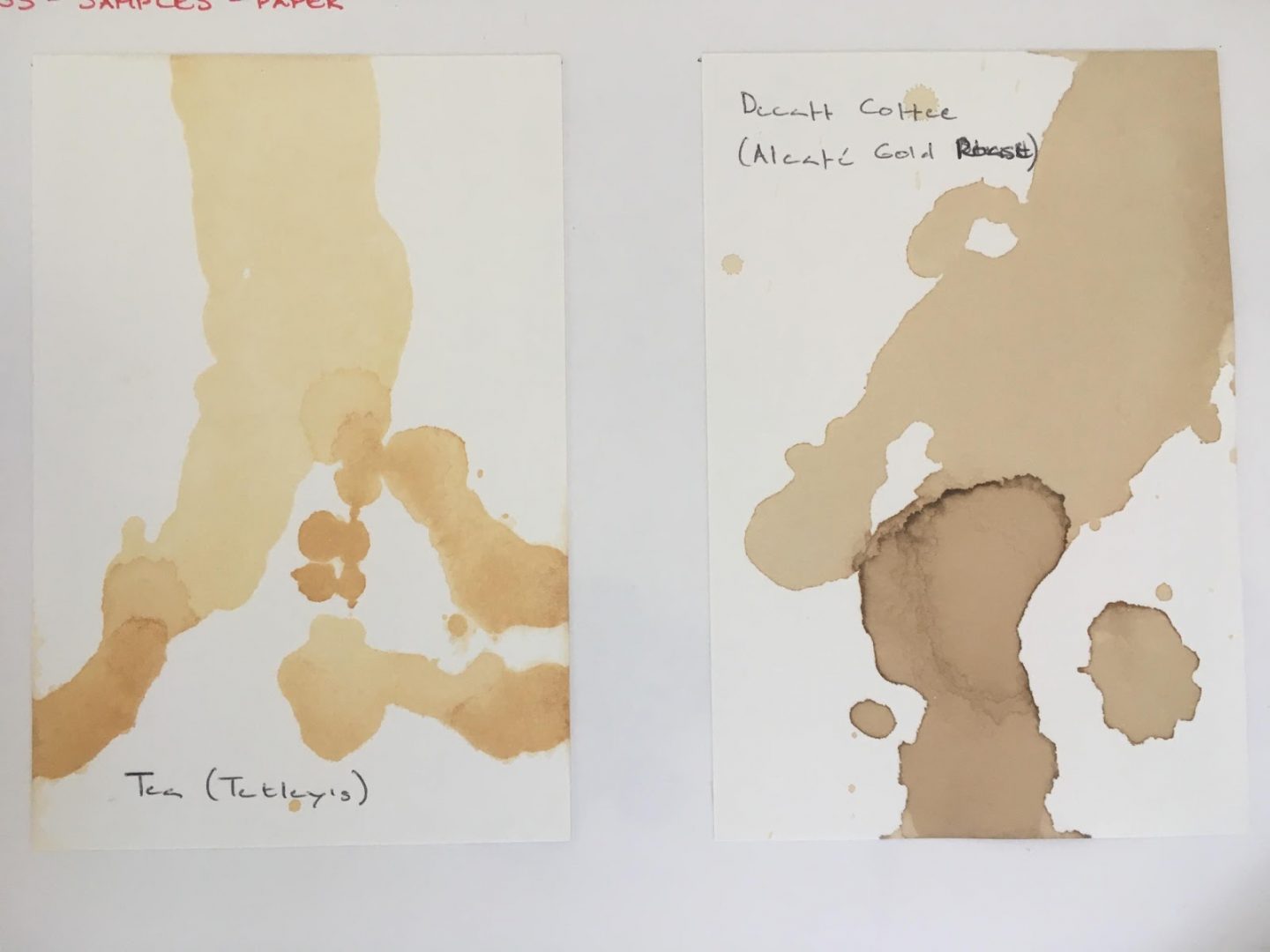
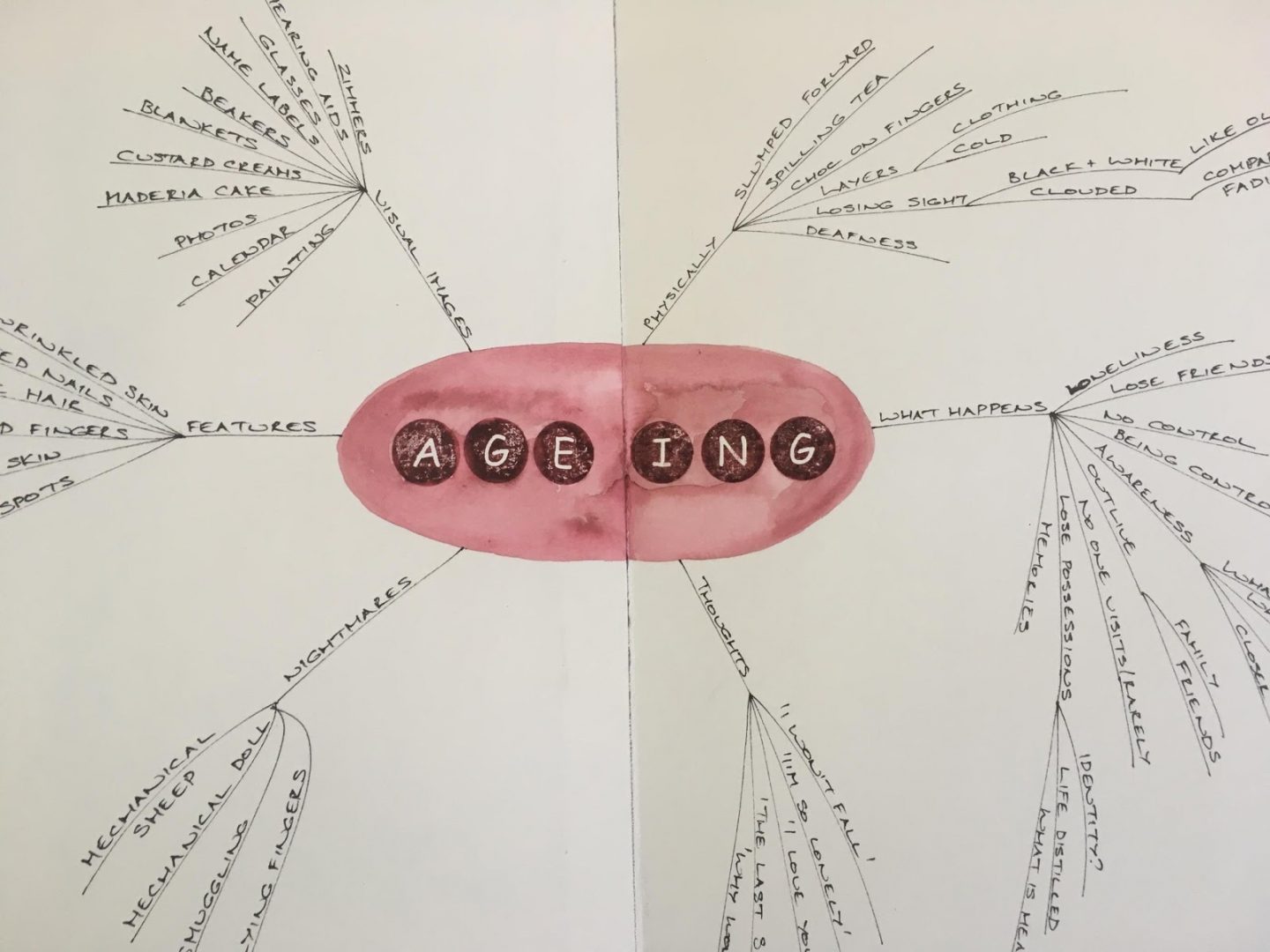
It is useful to see different approaches to tracking the development of ideas in a visual and textual sense.
What stands out is the breadth and depth of enquiry across different methods, materials and approaches. It is a rich project, sensitively handled where the student has allowed herself to develop a sense of personal direction with ambition. I asked Catherine some further questions below;
Did you enjoy this unit?
I did, eventually. While I was working on the course my mother had to go into a care home and died a year later. At several points I debated continuing with the course but the support of my tutor, Michele Whiting, kept me going. Michele encouraged me to make connections between my own work and the artists I was researching and, gradually, I began to have more confidence in what I was doing.
How did it help you to develop your personal practice direction?
For the first assignment my submission was a series of small images with little to connect them. However, some of the research undertaken at that stage, into ideas around identity, stayed with me as it seemed to echo the situation we were in as a family. I decided to work around the theme of ageing and this helped me to focus. As the course progressed these ideas developed into an exploration of childhood memories and a sense of place.
By then mum had passed away and we were clearing the family home. I was reading Bachelard’s The Poetics of Space and it seemed to reflect the physical and mental space that I was in. I experimented with materials from the family home and, through research into the work of Ian Kiaer, thought about ways in which I could use the physical space of the house and the garden.
Prior to this I tended to see a separation between ‘real life’ and what I was doing creatively, with the creative work offering an escape from the day-to-day. Working with themes that directly reflected what was happening in my life made me realise that the sense of separation was an illusion. My studio practice has evolved to become a space where I can reflect on whatever is going on in my life and, for this particular project, offered the chance to share that reflection with family.
How did it affect your understanding of painting?
In terms of the use of materials my understanding of ‘painting’ has widened. At the beginning of the course I was working on a very small scale using traditional supports and techniques, though this may have reflected how I was feeling at the time. Researching ideas around memory led me to the work of Louise Bourgeois and Judy Watson and their use of a wide variety of materials to evoke emotions associated with childhood and cultural memories. In particular, Watson’s works on unstretched canvas inspired me to work on a larger scale and to use a range of different fabrics as supports.
A comment by my tutor to ‘think of work as a haiku rather than extended poem’ led to research into haiga art and ideas around space in a painting and the connection with the written word. These are concepts that, in my creative practice, I would like to explore further.
What did you enjoy most about this individual project?
Once I began to work with materials from the family home I felt as if I was making a visceral connection with the memories I was exploring. The project had started with mum and a focus on ageing, frailty and our sense of identity. The sheets, curtains and tea towels embodied this, reflecting family life, the house, garden and domestic routines. Some of the fabrics were marked or worn through. Previously I would have felt the need to cover up or work around such imperfections but I became more open to following where the materials led and allowing the fabrics themselves to reflect the wear and tear of family life and the passing of time.
Bachelard, G. The Poetics of Space. Boston, Massachusetts: Beacon Press, 1994.
|
|






